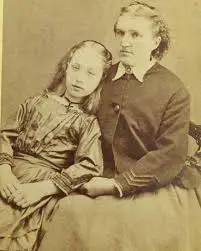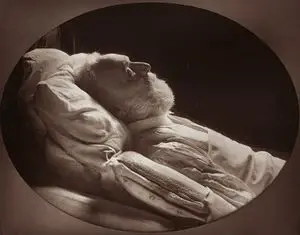Where Did the Tradition Of Death Photography Emerge From
Virtually every culture has a way to remember a loved one who has died. Usually this comes in the form of some type of memorial or even picture of the departed. However, some cultures have also chosen to show the deceased after death, sometimes in a pose or lying or seated in state. The tradition of post-mortem portraits and photography were popular in the 19th century but they have never gone away and this tradition is still practiced in some cultures.
Contents
Beginnings of Post-Mortem Portraits and Photography
In the 1840s, daguerreotype photography made the idea of portraits popular among the middle classes. Previously, only wealthy classes were able to afford and commission portraits of themselves. While technology began to rapidly change in the mid-19th century, opening up new possibilities for consumerism, other trends that were common before this continued. Perhaps among the most telling was the trend of high infant mortality and high mortality among urban populations that were exposed to new forms of infectious diseases, including high incidences of cholera. High death rates and increasing population meant a new market began to emerge in many industrial countries as families experienced the sharp loss of losing a loved one while looking for ways to memorialize them. This began the tradition of death or post-mortem portraits. There were earlier, Medieval and early modern traditions in Europe, in sculpture and paintings, that showed the body or deceased in different form of decay after they had died. Death masks were common from the Medieval period and throughout the modern period, including in the 19th century. These were often done to remind people of the presence of death and the need for Christ and God to save someone from eternal decay. However, showing someone almost immediately after they died in a portrait or even posing manner was a new, mid-19th century tradition that emerged in Great Britain, the United States, and in Europe (Figure 1).[1]
Establishment of the Tradition
In the 1840s and much of the later 19th century, most people continued to die in their homes. Thus the tradition began where after a loved one had died the local photographer would be summoned to the house. Initially, families did not do much to make the deceased appear better or nice in the photograph. However, even poorer families began to develop a new taste for clothing or scenery to help remember their loved one. Different traditions did begin to emerge in Europe and the United States. In the US, families began to take photos and put them in boxes or mantels that would help remember the dead. In Europe, photographs were sometimes publically displayed to memorialize the deceased to others. Famous individuals such as Victor Hugo were photographed shortly after death with these photographs publically displayed (Figure 2).
By the late 19th century, photographs of the recently deceased became more elaborate. Now it was routine to even open the eyes of the dead and make them as living as possible in photographs. Families would even do family portraits with the diseased in them made to look like they are still living. Symbols, such as drums or hourglasses, were used as symbols of the dead in photographs, where these symbols would indicate that march of time and the limited time we might have.
In the late 19th century and early 20th century, post-mortem photograph became less popular in the United States. However, there was some resurgence up until the 1930s. During this time, so-called "mourning tableaux" became popular, where the deceased would now be placed in a coffin and photographs of family members around the coffin would be conducted as a memorial photograph. By World War II, it was mostly ethnic urban minorities and rural populations that still practiced the tradition of post-mortem photography. Photographers such as James Van Der Zee in Harlem became well known for their post-mortem portrait photographs. He created a book called Harlem Book of the Dead that showed some of his work and symbolized the still somewhat popular practice in parts of the United States.
Current Cultures that Practice the Tradition
In Europe, the culture also slowly died during the 20th century. The key thing that changed was death occurred more frequently in hospitals. Death itself became regulated as well, as legislation in the United States and other Western countries increasingly made it less common for people to die in their homes. This made it more difficult to photograph the dead as death itself became a medical rather than family experience for many, helping to erode the tradition as well. However, in the 19th century, many cultures had begun adopting the use of post-mortem photography. These cultures continued to practice this even up to today. In some eastern cultures, such Christians in the Middle East, prominent dead figures are still displayed publically and photographed, where they are made to look as if they are sleeping in their vestments. For instance, the death of bishops or well known religious figures is often displayed in this way. In some African countries, this is also practiced more commonly.
In the West, post-mortem photography has not completely gone away. The relatively few who do practice it mostly now take photographs of the dead in their casket and after they have been embalmed. The practice of dressing someone up in clothing that symbolized their life, such as their work uniform or wedding clothes, is still frequent in Western culture, where these individuals sometimes have their photographs that are mostly kept private in the family. African-American traditions have still kept post-mortem traditions to an extent. Elizabeth Heyert is one photographer who recently created a traveling exhibition of African-American post-mortem photographs showing the deceased in their finest clothing and looking like they are resting in their caskets.
Conclusion
Perhaps it is a practice many of us find strange today, but post-mortem photography, whether publically displayed or shown mostly to family and loved ones, was very common in the 19th century. It was a time of rapid technological change that brought new traditions to families while also forcing people to reconcile with the fact that early or unexpected death occurred frequently. In photography, people found a new medium to grieve. The style of that grieving changed over time and in different cultures. Some chose to show the dead as if they are resting, while others tried to make it look like they were still living. These traditions have not entirely disappeared, as some cultures and sub-cultures within the West still practice this tradition. In the West, we are still fascinated by leaked photographs of dead celebrities or famous people. While this may seem odd, at one point it was the standard to show your recently departed in a clear medium like photography.
References
- ↑ For more on the development of post-mortem photography, see: Ruby, J. (1995). Secure the Shadow: Death and Photography in America. MIT Press.

